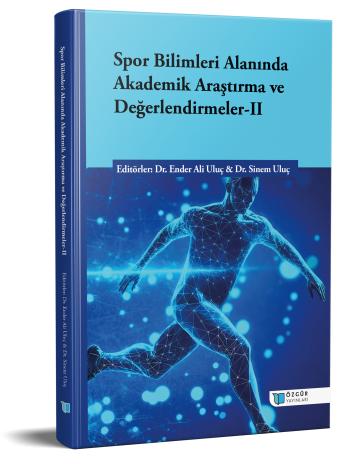
Oxygen and Lactate Kinetics in Submaximal and Maximal Exercise Tests
Chapter from the book:
Uluç,
E.
A.
&
Uluç,
S.
(eds.)
2024.
Academic Research and Evaluations in the Field of Sports Sciences II.
Synopsis
The characteristics of oxygen uptake (VO2) kinetics differ depending on the intensity of exercise. When exercise is performed at a certain workload and this workload is below the lactate threshold (LT), VO2 increases exponentially to a steady-state level. In this range, the slope of the VO2 increase relative to the workload or the time constant of the VO2 responses has not been found to be related to the workload, indicating a linear dynamic relationship between VO2 and workload. However, certain factors such as physical training, age, and pathological conditions can alter VO2 kinetic responses at the onset of exercise. Regarding the control mechanism for exercise VO2 kinetics, two opposing hypotheses have been proposed. One suggests that the rate of increase in VO2 at the onset of exercise is limited by the capacity to transport oxygen to the active muscles. The other proposes that the rate-limiting step determining the rate of increase in oxygen utilization during exercise is the ability to use oxygen. This issue remains debated. When exercise is performed at a workload above the LT, VO2 kinetics become more complex. After a few minutes of exercise, an additional component develops. This slow component can delay the time to reach steady-state VO2 or direct VO2 to its maximum level depending on the intensity of exercise. The magnitude of this slow component also depends on the duration of the exercise. Possible causes of the slow component of VO2 during heavy exercise include: (i) an increase in blood lactate levels; (ii) an increase in plasma epinephrine (adrenaline) levels; (iii) increased work of ventilation; (iv) elevated body temperature; and (v) recruitment of type IIb fibers. Given that 86% of the slow component of VO2 is attributed to the exercising limbs, it is thought that the major contributor is likely the exercising muscle itself. The increased recruitment of low-efficiency type IIb fibers (involved in the slow component) during high-intensity exercise can lead to an increase in the oxygen cost of exercise. Changes in the pattern of motor unit recruitment and, consequently, the lesser activation of type IIb fibers after physical training may account for a large part of the observed reduction in the slow component of VO2.

